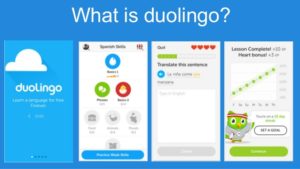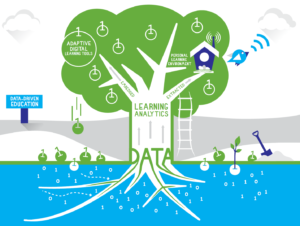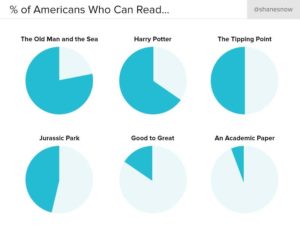How Artificial Intelligence Can Change Education
AI • May 29,2016

How Artificial Intelligence Can Change Education
In the beginning of 2016 Jill Watson, an IBM-designed bot, has been helping graduate students at Georgia Institute of Technology solve problems with their design projects. Responding to questions over email and posted on forums, Jill had a casual, colloquial tone, and was able to offer nuanced and accurate responses within minutes. A robot has been teaching graduate students for 5 months and none of them realized. Here are just a few of artificial intelligence tools and technologies that will shape and define the educational experience of the future.
Duolingo: voice recognition for language learning
 Duolingo is the world’s most popular platform to learn a language. App predicts your word strength, figures out which sentences will help you best practice your weakest words/skills, recommends immersion practice documents (translations) based on your progress and estimates the quality of a translation-in-progress.
Duolingo is the world’s most popular platform to learn a language. App predicts your word strength, figures out which sentences will help you best practice your weakest words/skills, recommends immersion practice documents (translations) based on your progress and estimates the quality of a translation-in-progress.
Plexuss: college comparison and recruitment platform
 Plexuss facilitates contact between universities and future students, and aims to help students make an informed decision when it comes to choosing the right university. It allows users to take a virtual tour of their selected campuses, compare colleges, and chat with universities of their choice. The platform includes a college ranking system, which collates data from trustworthy sources including Forbes, Reuters and Shanghai Ranking. Algorithm compares data using a variety of criteria like in- and out-of-state tuition, acceptance rates, college endowment funds, or more advanced search criteria such as student-to- faculty ratios, SAT score percentiles, environmental sustainability policies etc. Colleges no longer have to send out expensive and time-consuming recruitment information packs, and are instead able to easily view candidate profiles through Plexuss website.
Plexuss facilitates contact between universities and future students, and aims to help students make an informed decision when it comes to choosing the right university. It allows users to take a virtual tour of their selected campuses, compare colleges, and chat with universities of their choice. The platform includes a college ranking system, which collates data from trustworthy sources including Forbes, Reuters and Shanghai Ranking. Algorithm compares data using a variety of criteria like in- and out-of-state tuition, acceptance rates, college endowment funds, or more advanced search criteria such as student-to- faculty ratios, SAT score percentiles, environmental sustainability policies etc. Colleges no longer have to send out expensive and time-consuming recruitment information packs, and are instead able to easily view candidate profiles through Plexuss website.
Intelligent tutoring system
 An intelligent tutoring system is a computer system that aims to provide immediate and customized instruction or feedback to learners, usually without intervention from a human teacher. It was constructed to help students learn geography, circuits, medical diagnosis, computer programming, mathematics, physics, genetics, chemistry, etc. ITSs have the common goal of enabling learning in a meaningful and effective manner by using a variety of computing technologies. This technology is used in both formal education and professional settings. It aims to solve the problem of over-dependency of students over teachers for quality education. Intelligent tutoring system can be useful when large groups need to be tutored simultaneously or many replicated tutoring efforts are needed (in technical training situations such as training of military recruits and high school mathematics).
An intelligent tutoring system is a computer system that aims to provide immediate and customized instruction or feedback to learners, usually without intervention from a human teacher. It was constructed to help students learn geography, circuits, medical diagnosis, computer programming, mathematics, physics, genetics, chemistry, etc. ITSs have the common goal of enabling learning in a meaningful and effective manner by using a variety of computing technologies. This technology is used in both formal education and professional settings. It aims to solve the problem of over-dependency of students over teachers for quality education. Intelligent tutoring system can be useful when large groups need to be tutored simultaneously or many replicated tutoring efforts are needed (in technical training situations such as training of military recruits and high school mathematics).
Recognition apps: decode the world with your smartphone
 As more schools bring tablets into the classroom, educators are finding that apps are game changers that generate excitement and motivates students. A great example of recognition app is rock and mineral identifier, which is full of information for students who are identifying rocks and minerals. If a school doesn’t have access to hands-on materials this app can work as a substitution. Some of the most powerful education apps are used for teaching reading and supporting differentiation for students with disabilities (especially the ones using speech and text recognition).
As more schools bring tablets into the classroom, educators are finding that apps are game changers that generate excitement and motivates students. A great example of recognition app is rock and mineral identifier, which is full of information for students who are identifying rocks and minerals. If a school doesn’t have access to hands-on materials this app can work as a substitution. Some of the most powerful education apps are used for teaching reading and supporting differentiation for students with disabilities (especially the ones using speech and text recognition).
Woogie: educational companion
Since October 2015, a group of Romanian engineers and programmers is creating Woogie – a voice-enabled AI device. It is forthcoming for kids aged between 6 and 12 years, native English speakers. Woogie’s plan is to cross the MVP phase in the fall of 2016. It will be able to detect, read, process and understand the human language. Also, it will have the capability of converting text to speech and speech to text, able to play radio stations, podcasts and shows according to the user’s age. Also, it will play music on request or based on learning algorithms. Developers hope that Woogie will help children to memorize different information from multiple areas. It does that based on interactivity. It acknowledges the kid’s presence in the room and reacts according to this. Also, will control smart home appliances like room lights or sound volume and keeps the child up-to-date on the information he shows interest on. For example, if the child has a favorite artist, the companion can provide useful news about that artist.
Learning analytics: educational application
 Learning analytics is an educational application of web analytics aimed at learner profiling, a process of gathering and analyzing details of individual student interactions in online learning activities. Students often act as direct consumers of learning analytics, particularly through dashboards that support the development of self-regulated learning and insight into one’s own learning. Learning analytics can assist students in course selection. It provides a broad range of insight into course materials, student engagement, and student performance.For example, degree compass pairs current students with the courses that best fit their talents and program of study for upcoming semesters. Advisors can use this system to identify the students who are at the highest risk of failure.
Learning analytics is an educational application of web analytics aimed at learner profiling, a process of gathering and analyzing details of individual student interactions in online learning activities. Students often act as direct consumers of learning analytics, particularly through dashboards that support the development of self-regulated learning and insight into one’s own learning. Learning analytics can assist students in course selection. It provides a broad range of insight into course materials, student engagement, and student performance.For example, degree compass pairs current students with the courses that best fit their talents and program of study for upcoming semesters. Advisors can use this system to identify the students who are at the highest risk of failure.
Personal trainer: fitness with machine learning
Millions of people exercise without proper form, which reduces the effectiveness of their workouts and leads to increased injury risk. Researchers from Stanford University aim to help exercisers improve their form by giving fitness advice with machine learning. They explore the free standing squat specifically, a fundamental, full body exercise where proper form is crucial. A personal trainer can help people exercise in proper form, increase the effectiveness of their workouts and help to avoid injury risk.
Viper: plagiarism checking tool

Plagiarism is defined as the use or close imitation of another author’s work, which has been claimed as your own. To avoid plagiarism, you should always reference correctly according to your institution’s guidelines and use Viper. Viper is fast becoming the plagiarism of choice with over 10 billion resources scanned and an easy interface which highlights potential areas of plagiarism in your work. Viper is free and easy to use side by side comparison tool with 100% accurate reports.
Automated essay grading
 Automated essay grading is a tool with math models which are able to make predictions that closely match those made by human graders. It can be used for essays of intermediate writing level (7-10th grades). Given enough human graded training examples for a writing prompt, the system can automate the grading process for that prompt with fairly good accuracy. Using machine learning to assess human writing can potentially make quality education more accessible. The use of AES for high-stakes testing in education has generated the significant backlash, with opponents pointing to research that computers cannot yet grade writing accurately and arguing that their use for such purposes promotes teaching writing in reductive ways.
Automated essay grading is a tool with math models which are able to make predictions that closely match those made by human graders. It can be used for essays of intermediate writing level (7-10th grades). Given enough human graded training examples for a writing prompt, the system can automate the grading process for that prompt with fairly good accuracy. Using machine learning to assess human writing can potentially make quality education more accessible. The use of AES for high-stakes testing in education has generated the significant backlash, with opponents pointing to research that computers cannot yet grade writing accurately and arguing that their use for such purposes promotes teaching writing in reductive ways.
Better reading levels
 Measuring the reading difficulty of a particular text is a common and salient problem in the educational world, particularly with respect to new or struggling readers. While common sense
Measuring the reading difficulty of a particular text is a common and salient problem in the educational world, particularly with respect to new or struggling readers. While common sense
measures exist for canonical texts, assigning an appropriate reading level metric to new resources
remains challenging. Current systems have been widely criticized for misrepresenting the difficulty of texts which causes frustration for students and educators alike. Better reading levels use machine learning to reproduce results of the Lexile Reading Measure (the most popular metric for reading difficulty) and focus on four features: sentence length, paragraph length, word length and difficulty of vocabulary.
One-to-one tutoring has long been thought the most-effective approach to teaching but would be too expensive to provide for all students. That’s why artificial intelligence can be used to provide children with one-to-one tutoring to improve their learning and monitor their well-being. Instead of being examined in traditional ways, children could be assessed in a complete manner by collecting data about their performance over a long period, providing employers and educational institutions with a richer picture of their abilities. AI could radically transform education system but it needs more funding and more push from academics and governments.
Author: AI.Business
If you like our articles, please subscribe to our monthly newsletter:
[mc4wp_form id=”763″]